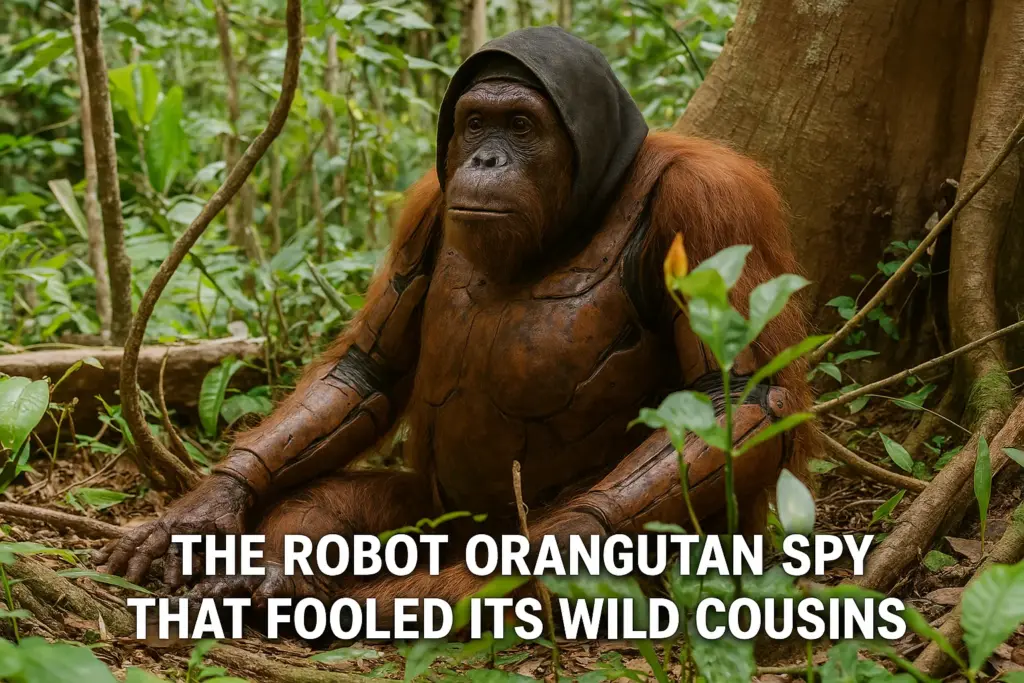Ever think about what happens when you put a robot orangutan among real ones? The BBC show “Spy in the Wild” did just that—and the results were mind-blowing.
A Robot Among the Intelligent
Orangutans rank as some of the smartest creatures on our planet. Filming these crafty primates isn’t easy, which is why the show created an ultra-realistic spy robot to capture their natural behaviors.
This wasn’t just any robot. The team designed it to mimic facial expressions that orangutans use to communicate. Instead of showing teeth (a sign of aggression), the robot needed to display friendly signals to gain acceptance.
First Impressions Matter
When the spy orangutan first appeared, it caught attention fast. Adult males, always on the lookout for new females, approached with caution. The robot pouted its mouth—a signal that it wasn’t a threat.
Word spread quickly through the orangutan community. A young male came to check things out but kept his distance. His testing method? Throwing twigs at the strange newcomer! Not exactly what humans would call polite, but for orangutans, this creative problem-solving showed real intelligence.
A Young Mind at Work
As more orangutans visited the robot, their confidence grew. One particularly curious youngster took special interest.
Young orangutans learn about their world through constant investigation. The spy camera captured an amazing view of this learning process in action. The young orangutan examined the robot thoroughly before going back to its group, curiosity satisfied.
Soap Opera in the Jungle
The film crew witnessed something truly remarkable: orangutans using soap! A mother orangutan, carefully keeping her baby dry, visited an old research station and helped herself to a bar of soap.
She carried it back to the forest in her mouth and shared it with a friend. The orangutans used the soap just like humans would—creating suds and washing themselves.
What makes this so amazing? These weren’t captive orangutans. They were wild-born, yet they learned this behavior anyway. About 40 years ago, rehabilitated orangutans saw local people washing in the river. Now this knowledge has spread through the wild population.
Cultural Transmission
The sharing of soap shows how this behavior spreads. It’s a form of animal culture—knowledge passed down to younger generations. This kind of cultural transmission occurs in very few species.
Why orangutans like to lather up remains somewhat mysterious. However, the film crew observed a female chewing bark to create frothy lather in her mouth, similar to soap suds. She rubbed it on her arm with the same motions as soap washing—but then she ate it!
Orangutans use medicinal plants in similar ways, so the bark might have health benefits. Perhaps soap washing caught on so easily because it matched behavior they already practiced in nature.
Survival Through Smarts
Strangely enough, orangutans seem to enjoy the taste of soap. It doesn’t harm them and might even aid digestion. When the spy orangutan mimicked this behavior, it fascinated its real counterpart.
For orangutans, intelligent curiosity isn’t just an interesting trait—it’s essential for survival in their complex jungle world.
This robot spy gave us a window into orangutan society we couldn’t get any other way, showing just how smart, adaptive, and curious these amazing primates really are.





